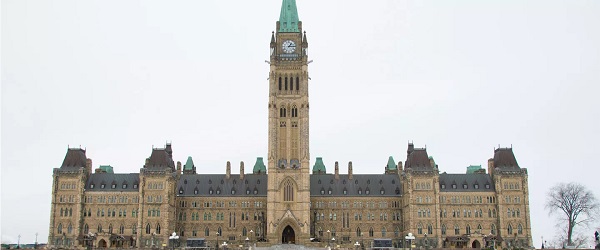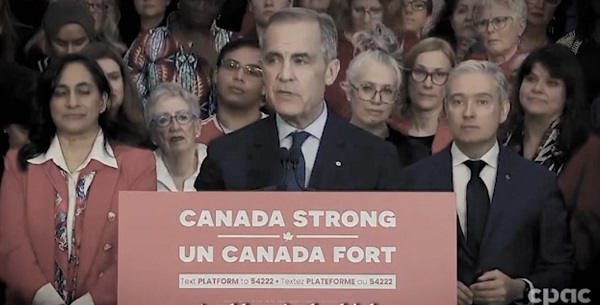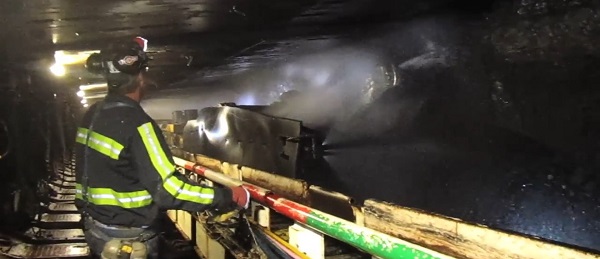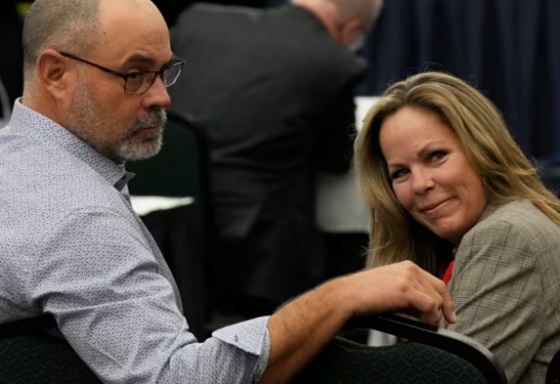Business
Panhandling May Not Be So Bad After All

Anyone who’s ever gone through a period of unemployment knows how badly it can play on one’s mental state.
With a 6.9 per cent unemployment rate and mass lay-offs still hovering over Calgary’s picturesque skyline, the thought of becoming a part of that statistic is less than ideal. Whether it be a boot out the door, a lay-off, or an unexpected company closure, it causes a state of panic – a surprise slap across the face by an ROE, or in some cases, a non-existent ROE.
Mia Ostere, a former long-term employee at The UPS Store in Crowfoot Crescent (R.I.P), is currently living this reality. Like any other morning, she arrived at the store on January 1, only to find that a sign had been posted by the owner, stating that they decided to close the store for good.
“I was told the day before to hand in my keys, but I would still have a job.” Said Ostere. “I literally stood there wondering, what now?” Like, Ostere, many Calgarians are finding themselves joining the ranks of the unemployed. Opening the doors to self-sabotaging, negative self fulfilling prophecies, and a mental state so fragile, the slightest thing can cause it to shatter.
With the high volume of job-hungry Calgarians, propelling resumes and cover letters by the dozen through online job boards, desperation begins to take its toll, playing its starring role.
I’ve been applying to as many jobs as possible every single day, but with the economy, it’s really tough.” Said Ostere. Anxiety, depression, suicidal thoughts, and feeling of hopelessness, are just a few of the prime suspects in the case of both long-term and short-term unemployment.
“Honestly, I feel like I’m slipping into a bit of a depression, it’s all too much.” Explained Ostere. Fortunately, there are places to turn when the going is getting a little too tough. Counselling, through organizations such as the Calgary Counselling Centre, employment support, and self-care are all highly recommended options throughout any period of unemployment, to help cope and get back into the workforce.
Apps are also readily available, one in particular called Head space: Meditation & Sleep, which provides support through Mindfulness exercises and guided meditation.
When there is a stack of bills piling up on the kitchen table and Mr. Mortgage is knocking on the front door – it’s incredibly difficult to position oneself in the Full Lotus position, eyes closed, brain slipping into a full-blown state of Zen, while the mind is constantly thinking about how to position itself snuggly under a security blanket, with a steady income wrapped inside.
Perhaps enhancing those transferable skills will have to be put on the back burner for a while. In the meantime, it’s time to dust off the resume, throw on those pair of slacks that have been abandoned in the closet, and slip on those blue, ahem, black suede shoes. As the old saying goes: “If you’re going through hell, keep going.”
Onwards soldiers, onwards.
2025 Federal Election
POLL: Canadians want spending cuts

 By Gage Haubrich
By Gage Haubrich
The Canadian Taxpayers Federation released Leger polling showing Canadians want the federal government to cut spending and shrink the size and cost of the bureaucracy.
“The poll shows most Canadians want the federal government to cut spending,” said Gage Haubrich, CTF Prairie Director. “Canadians know they pay too much tax because the government wastes too much money.”
Between 2019 and 2024, federal government spending increased 26 per cent even after accounting for inflation. Leger asked Canadians what they think should happen to federal government spending in the next five years. Results of the poll show:
- 43 per cent say reduce spending
- 20 per cent say increase spending
- 16 per cent say maintain spending
- 20 per cent don’t know
The federal government added 108,000 bureaucrats and increased the cost of the bureaucracy 73 per cent since 2016. Leger asked Canadians what they think should happen to the size and cost of the federal bureaucracy. Results of the poll show:
- 53 per cent say reduce
- 24 per cent say maintain
- 4 per cent say increase
- 19 per cent don’t know
Liberal Leader Mark Carney promised to “balance the operating budget in three years.” Leger asked Canadians if they believed Carney’s promise to balance the budget. Results of the poll show:
- 58 per cent are skeptical
- 32 per cent are confident
- 10 per cent don’t know
“Any politician that wants to fix the budget and cut taxes will need to shrink the size and cost of Ottawa’s bloated bureaucracy,” Haubrich said. “The polls show Canadians want to put the federal government on a diet and they won’t trust promises about balancing the budget unless politicians present credible plans.”
2025 Federal Election
Carney’s budget means more debt than Trudeau’s

The Canadian Taxpayers Federation is criticizing Liberal Party Leader Mark Carney’s budget plan for adding another $225 billion to the debt.
“Carney plans to borrow even more money than the Trudeau government planned to borrow,” said Franco Terrazzano, CTF Federal Director. “Carney claims he’s not like Trudeau and when it comes to the debt, here’s the truth: Carney’s plan is billions of dollars worse than Trudeau’s plan.”
Today, Carney released the Liberal Party’s “fiscal and costing plan.” Carney’s plan projects the debt to increase consistently.
Here is the breakdown of Carney’s annual budget deficits:
- 2025-26: $62 billion
- 2026-27: $60 billion
- 2027-28: $55 billion
- 2028-29: $48 billion
Over the next four years, Carney plans to add an extra $225 billion to the debt. For comparison, the Trudeau government planned on increasing the debt by $131 billion over those years, according to the most recent Fall Economic Statement.
Carney’s additional debt means he will waste an extra $5.6 billion on debt interest charges over the next four years. Debt interest charges already cost taxpayers $54 billion every year – more than $1 billion every week.
“Carney’s debt binge means he will waste $1 billion more every year on debt interest charges,” Terrazzano said. “Carney’s plan isn’t credible and it’s even more irresponsible than the Trudeau plan.
“After years of runaway spending Canadians need a government that will cut spending and stop wasting so much money on debt interest charges.”
-

 International20 hours ago
International20 hours agoPope Francis has died aged 88
-

 2025 Federal Election19 hours ago
2025 Federal Election19 hours agoCarney’s budget means more debt than Trudeau’s
-

 2025 Federal Election2 days ago
2025 Federal Election2 days agoA Perfect Storm of Corruption, Foreign Interference, and National Security Failures
-

 Business19 hours ago
Business19 hours agoCanada Urgently Needs A Watchdog For Government Waste
-

 2025 Federal Election2 days ago
2025 Federal Election2 days agoCampaign 2025 : The Liberal Costed Platform – Taxpayer Funded Fiction
-

 Energy19 hours ago
Energy19 hours agoIndigenous-led Projects Hold Key To Canada’s Energy Future
-

 International16 hours ago
International16 hours agoPope Francis Dies on Day after Easter
-

 International13 hours ago
International13 hours agoJD Vance was one of the last people to meet Pope Francis




